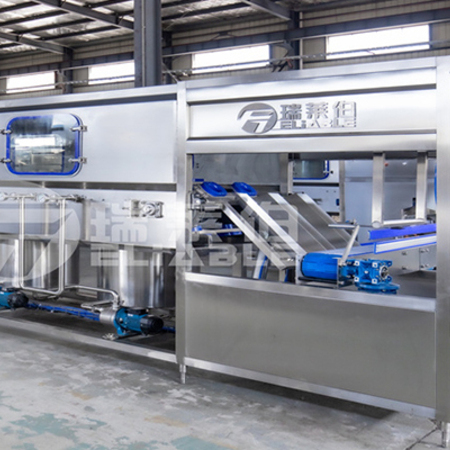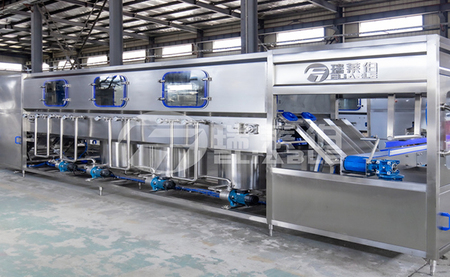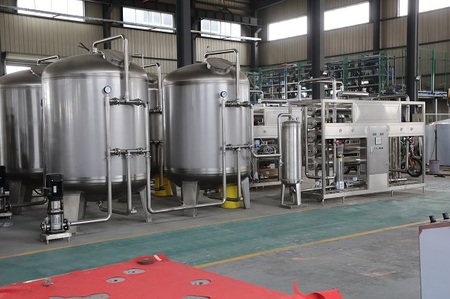News
Site Editor
 Site
/uploads/image/620333409d416.png
In this comprehensive guide, we'll delve into the inner workings of a filling machine, exploring its components, operation, and different types.
Site
/uploads/image/620333409d416.png
In this comprehensive guide, we'll delve into the inner workings of a filling machine, exploring its components, operation, and different types.
How Does a Filling Machine Work?
Views: 219
Author: Site Editor
Publish Time: 2024-03-28
Origin: Site
A filling machine is a crucial piece of equipment used in various industries to efficiently fill containers with liquids, powders, or other products. Whether it's bottling beverages, packaging pharmaceuticals, or filling containers with household chemicals, the filling machine automates the process, ensuring accuracy, consistency, and efficiency. In this comprehensive guide, we'll delve into the inner workings of a filling machine, exploring its components, operation, and different types.

Components of a Filling Machine
-
Container Conveyor: The container conveyor transports empty containers to the filling station, where they are filled with the desired product. It ensures a smooth and continuous flow of containers through the filling process.
-
Filling Nozzles: These are the components responsible for dispensing the product into the containers. The number of filling nozzles can vary depending on the capacity and speed requirements of the filling machine.
-
Product Reservoir: The product reservoir holds the liquid or powder to be dispensed. It can be a tank, hopper, or other storage vessel designed to maintain the product at the desired temperature and consistency.
-
Valves and Pumps: Valves and pumps control the flow of product from the reservoir to the filling nozzles. They ensure precise filling and prevent spills or overflows.
-
Control Panel: The control panel houses the interface used to program and monitor the filling process. Operators can set parameters such as fill volume, speed, and timing to meet specific requirements.
-
Capping or Sealing Mechanism: In some cases, filling machines are equipped with capping or sealing mechanisms to securely seal the filled containers once the filling process is complete.
Operation of a Filling Machine
-
Container Loading: Empty containers are loaded onto the conveyor system, either manually or automatically, depending on the machine's configuration.
-
Filling Sequence: As the containers move along the conveyor, they pass beneath the filling nozzles. The filling nozzles are activated sequentially or simultaneously, depending on the machine's design, and dispense the desired amount of product into each container.
-
Measurement and Control: During the filling process, sensors and measurement devices ensure accuracy by monitoring factors such as fill level, weight, or volume. The control panel allows operators to adjust settings as needed to maintain consistency.
-
Capping or Sealing: If the filling machine is equipped with a capping or sealing mechanism, filled containers are transferred to this station after filling. Caps or seals are applied to the containers to prevent leakage or contamination.
-
Quality Control: After filling and sealing, containers may undergo quality control checks to ensure proper filling levels, seal integrity, and overall product quality.
-
Packaging and Labeling: Once filled and inspected, containers are ready for packaging and labeling before being distributed to consumers.

Types of Filling Machines
-
Gravity Fillers: Gravity fillers rely on gravity to dispense liquids into containers. They are ideal for filling thin, free-flowing liquids such as water, juice, or oil.
-
Piston Fillers: Piston fillers use a piston mechanism to draw product from the reservoir and dispense it into containers. They are suitable for filling viscous or thick liquids such as sauces, creams, or gels.
-
Overflow Fillers: Overflow fillers are designed to fill containers to a precise level by overflowing excess product. They are commonly used for filling bottles or containers with foamy liquids or products that require a consistent fill level.
-
Auger Fillers: Auger fillers utilize a rotating auger screw to dispense powdered or granular products into containers. They are commonly used in the food, pharmaceutical, and chemical industries.
-
Volumetric Fillers: Volumetric fillers measure product volume directly to ensure accurate filling. They are versatile and can handle a wide range of products, including liquids, powders, and granules.
Conclusion
In summary, a filling machine is a sophisticated piece of equipment designed to automate the process of filling containers with various products. From the loading of empty containers to the precise dispensing of product and sealing of filled containers, filling machines streamline production processes, improve efficiency, and ensure product quality and consistency. With different types of filling machines available to accommodate a wide range of products and applications, businesses can choose the right filling solution to meet their specific needs and requirements.




